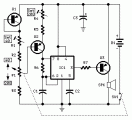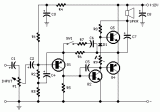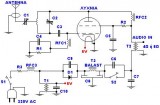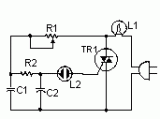FREE
circuits!
Recently added diagrams and projects
October 13, 2010
The circuit described here is that of a metal detector. The opera- tion of the circuit is based on superheterodyning principle which is commonly used in superhet receivers. The circuit utilises two RF oscillators. [more]
October 13, 2010
This amplifier was designed to be self-contained in a small loudspeaker box. It can be feed by Walkman, Mini-Disc and CD players, computers and similar devices having line or headphone output. Of course, in most... [more]
October 12, 2010
Using a thermistor in the position shown makes a heat activated sensor. A change in temperature will alter the output of the opamp and energize the relay and light the LED. Swapping the position of... [more]
October 12, 2010
This circuit is intended to indicate the power output level of any audio amplifier. It is simple, portable, and displays three power levels that can be set to any desired value. [more]
October 12, 2010
This circuit is intended for alerting purposes after a certain time is elapsed. It is suitable for table games requiring a fixed time to answer a question, or to move a piece etc. In this... [more]
October 12, 2010
This supply uses no heavy step down transformer and has an extremely low parts count. The circuit can be built very small and can supply small currents for small projects. The major downfall of this... [more]
October 12, 2010
This simple circuit has helped me out on many occasions. It is able to check transistors, in the circuit, down to 40 ohms across the collector-base or base-emitter junctions. It can also check the output... [more]
October 12, 2010
TECHNICAL CHARACTERISTICS: Tendency of catering: 220V AC Frequency of emission at FM: 88~108MHz Force of expense: max 45W (without the R3), [more]
October 12, 2010
This little circuit can be used to dim lights up to about 350 watts. It uses a simple, standard TRIAC circuit that, in my expirience, generates very little heat. Please note that this circuit cannot... [more]










 All posts
All posts